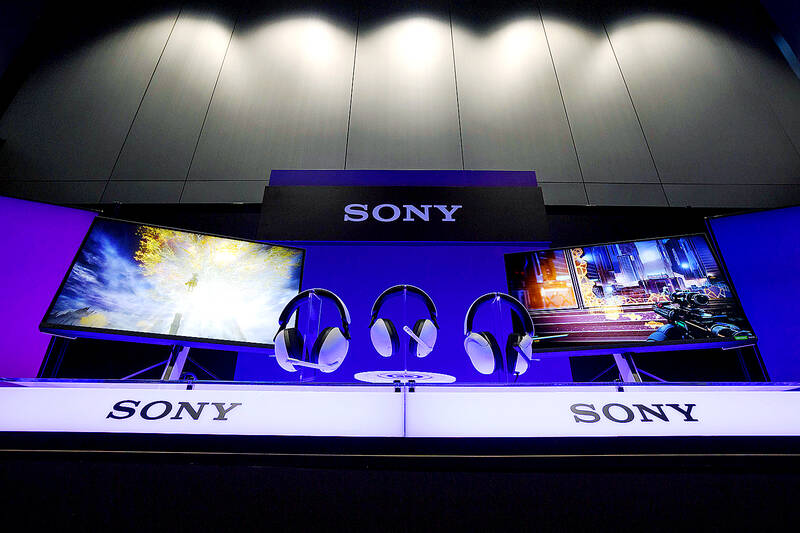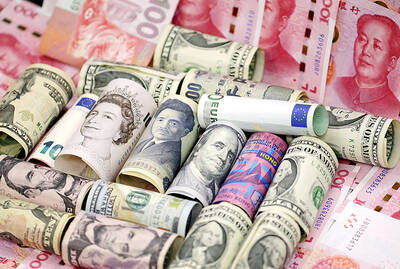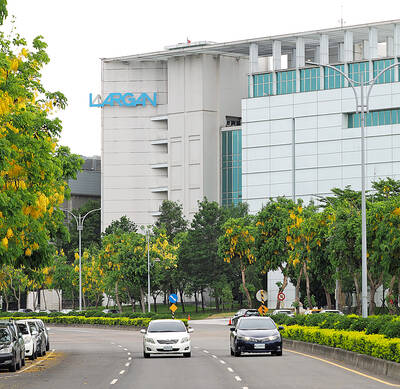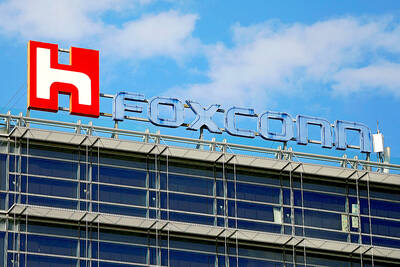Shipments of gaming monitors are expected to plunge 10 percent year-on-year to 20.5 million units this year, which would mark the first decline since the products first entered the market, researcher TrendForce Corp (集邦科技) said yesterday.
The researcher in March estimated that gaming monitor shipments would expand at an annual pace of 14 percent to about 26.1 million units this year.
However, soaring inflation in Europe and North America has significantly eroded growth momentum as people became conservative about spending money on consumer electronics.

Photo: Bloomberg
Consumers are also putting off purchases of gaming monitors due to delayed launches of new high-end graphics cards, the Taipei-based researcher said.
Gaming monitors with curved displays would account for about 44 percent of all gaming monitors this year, compared with 41 percent last year, as major display suppliers China Star Optoelectronics Technology Co (華星光電) and AUO Corp (友達) have boosted the production of curved displays, TrendForce said.
The penetration rate of curved displays among gaming monitors is likely to climb to 46 percent next year, thanks to the increasing supply of such monitors and a better price-to-performance ratio, the researcher said.
The uptake of gaming monitors with ultra-wide displays also helps stimulate demand for curved-display gaming monitors, it said.
OLED DISPLAYS
Separately, OLED e-sports displays this year entered the market with a 0.4 percent share, after Samsung Display Co Ltd launched its QD-OLED and LG Display Co Ltd unveiled white OLED e-sports monitor panel displays, TrendForce said.
The penetration rate of OLED e-sports displays is expected to reach 2 percent next year, as major monitor brands have joined the launch of OLED products, the researcher said.
TrendForce expects the gaming monitor market to return to annual growth of 5 percent next year to 21.6 million units, as more monitor vendors and panel display suppliers are joining in the market with a great diversity of new products.

Taiwan’s foreign exchange reserves hit a record high at the end of last month, surpassing the US$600 billion mark for the first time, the central bank said yesterday. Last month, the country’s foreign exchange reserves rose US$5.51 billion from a month earlier to reach US$602.94 billion due to an increase in returns from the central bank’s portfolio management, the movement of other foreign currencies in the portfolio against the US dollar and the bank’s efforts to smooth the volatility of the New Taiwan dollar. Department of Foreign Exchange Director-General Eugene Tsai (蔡炯民)said a rate cut cycle launched by the US Federal Reserve

Handset camera lens maker Largan Precision Co (大立光) on Sunday reported a 6.71 percent year-on-year decline in revenue for the third quarter, despite revenue last month hitting the highest level in 11 months. Third-quarter revenue was NT$17.68 billion (US$581.2 million), compared with NT$18.95 billion a year earlier, the company said in a statement. The figure was in line with Yuanta Securities Investment Consulting Co’s (元大投顧) forecast of NT$17.9 billion, but missed the market consensus estimate of NT$18.97 billion. The third-quarter revenue was a 51.44 percent increase from NT$11.67 billion in the second quarter, as the quarter is usually the peak

Nvidia Corp’s major server production partner Hon Hai Precision Industry Co (鴻海精密) reported 10.99 percent year-on-year growth in quarterly sales, signaling healthy demand for artificial intelligence (AI) infrastructure. Revenue totaled NT$2.06 trillion (US$67.72 billion) in the last quarter, in line with analysts’ projections, a company statement said. On a quarterly basis, revenue was up 14.47 percent. Hon Hai’s businesses cover four primary product segments: cloud and networking, smart consumer electronics, computing, and components and other products. Last quarter, “cloud and networking products delivered strong growth, components and other products demonstrated significant growth, while smart consumer electronics and computing products slightly declined,” compared with the

The US government on Wednesday sanctioned more than two dozen companies in China, Turkey and the United Arab Emirates, including offshoots of a US chip firm, accusing the businesses of providing illicit support to Iran’s military or proxies. The US Department of Commerce included two subsidiaries of US-based chip distributor Arrow Electronics Inc (艾睿電子) on its so-called entity list published on the federal register for facilitating purchases by Iran’s proxies of US tech. Arrow spokesman John Hourigan said that the subsidiaries have been operating in full compliance with US export control regulations and his company is discussing with the US Bureau of